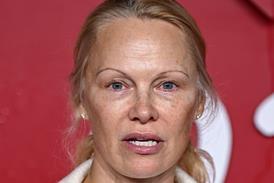Sex therapist Emma Waring delves into the cultural double standards that have existed for millennia, and which perpetuate the shame and guilt that women can feel around pleasure and intimacy
Many women fear their sexuality because of feelings of shame – including Christan women, but I see it in women of all faiths and none in my psychosexual therapy practice every week. Interestingly, I don’t see the same intrinsic sense of shame in the men I work with. So why is there a difference and where has this originated?
Double standards through history
Firstly, we need to understand some historical cultural norms that are actually documented in the Bible. The rules around sex for men and women were vastly different, with many examples of double standards. Men’s sexuality was seen as innate and revered, whereas a women’s sexuality focused on modesty and purity. In the ancient world there wasn’t a dating culture. Girls married shortly after puberty, arranged marriage was common and betrothal could happen when the girl was still very young. Virginity was highly prized and if a woman was raped, Israelite law stipulated the rapist had to marry her so that her reputation wasn’t ruined. If this didn’t happen, she was seen as ‘damaged goods’, which could bring shame on her family. Women who had sex outside of marriage were considered second class citizens (including prostitutes, concubines and slaves). Sex was only permitted within marriage and the primary concern was maintaining the rules around paternity. There were also rules around sex being prohibited when a woman was menstruating, as she was considered ‘unclean’. (Leviticus 15:19-33)
In contrast, men could lawfully have sex with more than one woman when married, and adultery for a man was if he had sex with a woman who was betrothed or married – ie a woman who ‘belonged’ to another man. It was not considered adultery if a man had sex with a concubine, slave or second wife.
There was a change in sexual ethics in Jewish writing prior to the writing of the New Testament and by the time Jesus and Paul had been born, sexual ethics for men and women had become the same. By the 1st century BC, Jewish and Gentile women and Jewish men were expected to have sex exclusively within marriage, but Greco-Roman (Gentile) men could continue to have extra marital sex.

Today’s mixed messages
Fast-forward 2000+ years and we still see double standards between the sexes. Linda Kay Kleins book Pure looks at the Purity movement of the 1990s-late 2000s within the Evangelical movement in America and the negative impact this has had on a whole generation of women.
Kay Klein says: “The cornerstone of the purity myth is the expectation that girls and women in particular will be utterly and absolutely nonsexual until the day they marry a man, at which point they will naturally and easily become his sexual satisfier, ensuring the couple will have children and never divorce: one man, one woman, in marriage forever.” She goes on to say: “for this formula to work, my girlfriends and I knew we had to follow a slew of rules. Unfortunately, none of us knew what they were. Sex was a shameful topic that we never got straight talk on what we were and were not allowed to do. It assumed that if no one ever talked to us about sex, it would just sort of go away until we needed it.”
Women have not only experienced victim blaming, they have done so against a wider backdrop of implied shame over their bodies – and in particular their genitals
As well as the message of abstinence, which resulted in little or no informative discussion or education, also came theologies such as the ‘modesty doctrine’. Kay Klein describes this as “the community’s understanding that women and girls are responsible for men’s and boy’s sexual thoughts, feelings and actions”. We don’t need to cast our eyes very far back to see examples of this in secular society. A male perpetrator is being tried for rape and questions are raised either by the judge or the defence lawyers as to what the victim was wearing and whether she had ‘lead him on’.
Women have not only experienced victim blaming, they have done so against a wider backdrop of implied shame over their bodies – and in particular their genitals. It is only recently that we have begun to talk more candidly about menstruation and menopause without feeling the need to speak in hushed tones or belittle a women’s symptoms as though she were some hormonal inconvenience.
Adverts for menstruation products have perpetuated the need to sanitise these through menstrual blood that is depicted as blue and reassuring women that they will remain dry, odourless and ‘fresh’. Likewise, we see a whole industry focused on genital hygiene products for women, but I have yet to see such products available and marketed for men.
Women’s genitals remain the topic of many a derogatory joke and labiaplasty, a surgery to reshape or resize the labia, has become increasingly popular. Given the negative focus on female genitalia, it is shocking how little we have actually known about female anatomy and arousal. The first comprehensive anatomical study of the clitoris was only published in 1998 and 2005 saw the first 3D image created using MRI scanning. However, despite this knowledge, clitoral anatomy remains largely absent from the medical curriculum and from medical research.
This is particularly relevant because one of the big misconceptions about female orgasm is that it happens through penetrative sex, which is not the case for most women. Only a very small percentage – around four per cent of women – will orgasm through penetration alone; most women will orgasm through manual stimulation, oral sex, the use of a clitoral vibrator or a combination of penetration and simultaneous clitoral stimulation. The pre-occupation with penetrative sex ignores the importance of the clitoris and perpetuates what is called the ‘pleasure gap’. Research shows that despite women regularly and consistently experiencing orgasm on their own they do not experience orgasm as consistently with a committed partner.
One of the reasons for the pleasure gap is that pornography, which has been aimed at male sexual pleasure, endorses the myth that it is a hard thrusting penis that brings a woman to climax. Again, we see the male patriarchal shadow perpetuating the need for men to be portrayed as potent, masculine and the gatekeeper of a woman’s sexual pleasure.
Despite big strides in the eight years since the ‘Me Too’ movement, we see still a culture of sexual double standards. ‘Boys will be boys’ and phrases such as ‘Jack the lad’ or ‘a ladies’ man’ are used to describe a man who avidly pursues sex but ‘slut shaming’ for women, and the associated names used, are testament to the fact that women who like sex are viewed as ‘promiscuous’. As a society we are striving to close the gender pay gap and afford women the same basic rights as men, but at the same time only just acknowledging that perhaps we shouldn’t be using bikini clad women to endorse darts or sell Formula One racing cars. We turn a blind eye to a sex industry where women are objectified for male pleasure and society justifies this by saying it’s a women’s choice. You only need to read Paid For: My journey though prostitution by Rachel Moran or The Case Against the Sexual Revolution by Louise Perry to understand that this is not the case.
For centuries women have walked down the aisle in white as a sign of their virginity and purity, but what about the man’s ‘purity’? As women, we are faced with so many mixed messages that are even more complex for Christian women to navigate:
You can want sex but only when you are told you can and should and you mustn’t want it too much.
Stay disconnected from your genitals, don’t touch your body or masturbate but nevertheless assume that when you do have sex you will instinctively know how to enjoy it.
Don’t think about sex and remain ‘pure’ until you are married. Then you must want sex and enjoy it even if this is something you have never experienced before and have no sense of how your body becomes aroused.
Understanding ourselves
So, how do we change the shame narrative that keeps women confused and disempowered when it comes to their sexuality?
As women, we need to take ownership of our sexuality; we need to understand and nurture our bodies, so we learn to experience sexual pleasure, and we need to do this for ourselves whether we have a partner or not. We have been “fearfully and wonderfully made” (and designed with a clitoris that is purely and exclusively for pleasure). We must understand how our bodies work and then, if we do have sexual intimacy with a partner, we have the wonderful gift of sharing this knowledge and building on it. One of the biggest issues I see in my practice is women who are disconnected from their bodies. They have received messages from parents growing up that caused feelings of shame around nudity and sex – and these were often reinforced by the Church’s teaching on abstinence – and they have been left with no confidence.
It is no wonder that difficulty with arousal is such a common problem for Christian women. During sexual intimacy we need to be ‘in the moment’ and we need our heads to be connected to our bodies so that we can experience pleasure that reinforces arousal to enable the cycle to repeat and build. If we are feeling anxious that we don’t know how to feel pleasure and we try harder to make it happen, we can start to experience performance anxiety; this can lead to inadequate arousal, which can result in pain and a host of other related sexual problems.
We must run towards our fear. We need to talk to others about our childhood experiences; the messages we were given about our bodies and sex that may have thwarted our ability to blossom. Many of us will have had similar journeys and we can listen and support one another. What permissions do we need to give ourselves and each other to thrive?
Further reading
Becoming Cliterate: Why orgasm equality matters and how to get it by Laurie Mintz PhD (HarperOne, 2017).
Paid For: My journey through prostitution by Rachel Moran (Gill & Macmillan, 2013).
Pure: Inside the Evangelical Movement that shames a generation of young women and how I brook free by Linda Kay Klein (Atria Books, 2018).
Seasons of Sex and Intimacy: For a husband and wife in marriage by Emma Waring (Hullo Creative, 2018).
She Comes First: The thinking man’s guide to pleasuring a woman by Ian Kerner (Souvenir Press, 2019).
The Case Against the Sexual Revolution: A new guide to sex in the 21st Century by Louise Perry (Polity, 2022).
Emma Waring is an experienced sex and relationship therapist, cardiac specialist nurse and Transactional Analysis counsellor. In Seasons of Sex and Intimacy, Emma covers many of the issues that couples face in their sexual relationship throughout marriage. Emma runs a clinic for individuals and couples experiencing sexual problems and regularly speaks to healthcare professionals and in churches on how couples can nurture lasting sexual enjoyment in their relationship, and how to manage rarely discussed but common sexual difficulties. Emma has worked with Nicky and Sila Lee on the remake of The Marriage Course and The Pre-Marriage Course and is featured in both. emmawaring.com

































1 Reader's comment